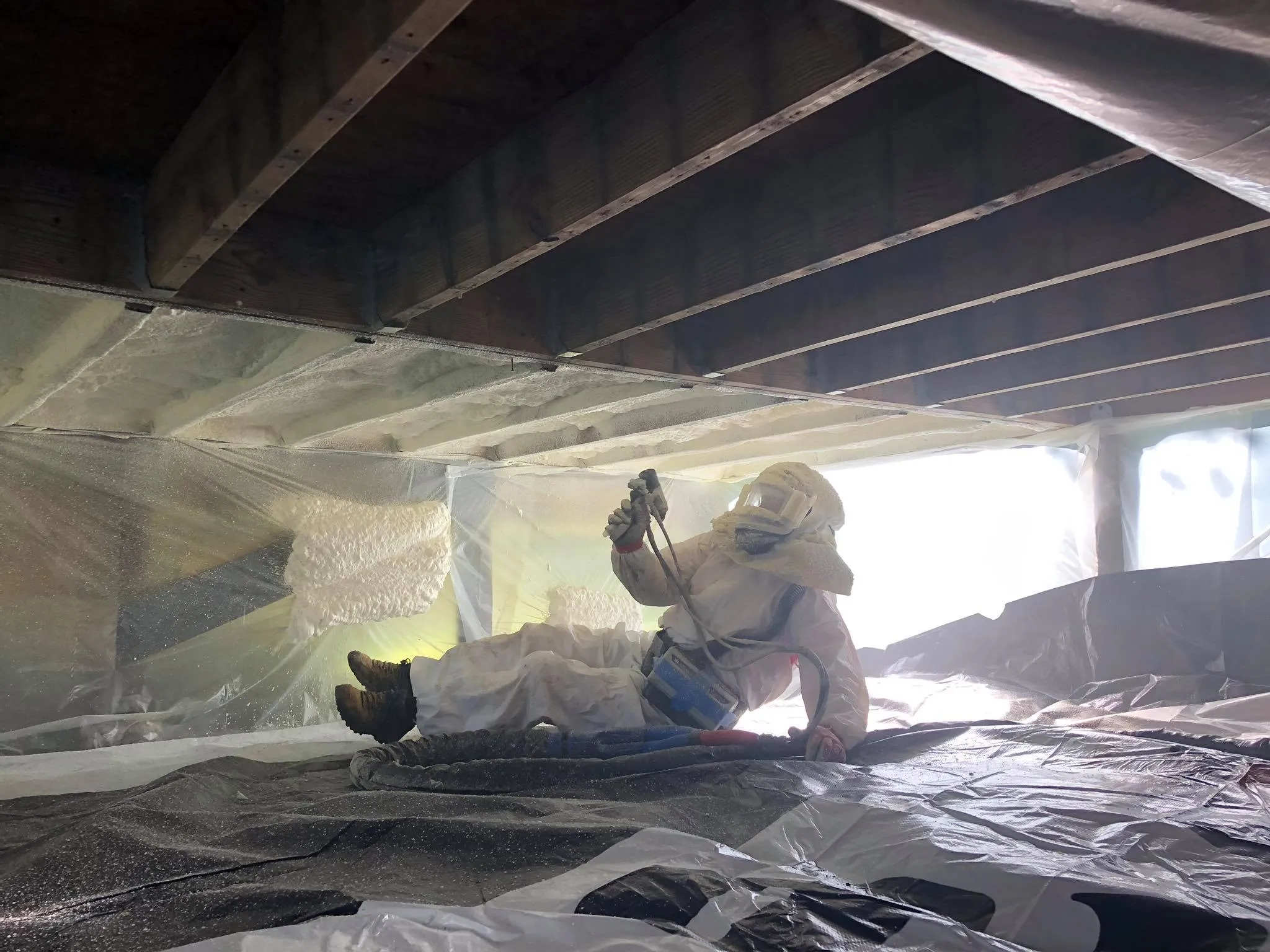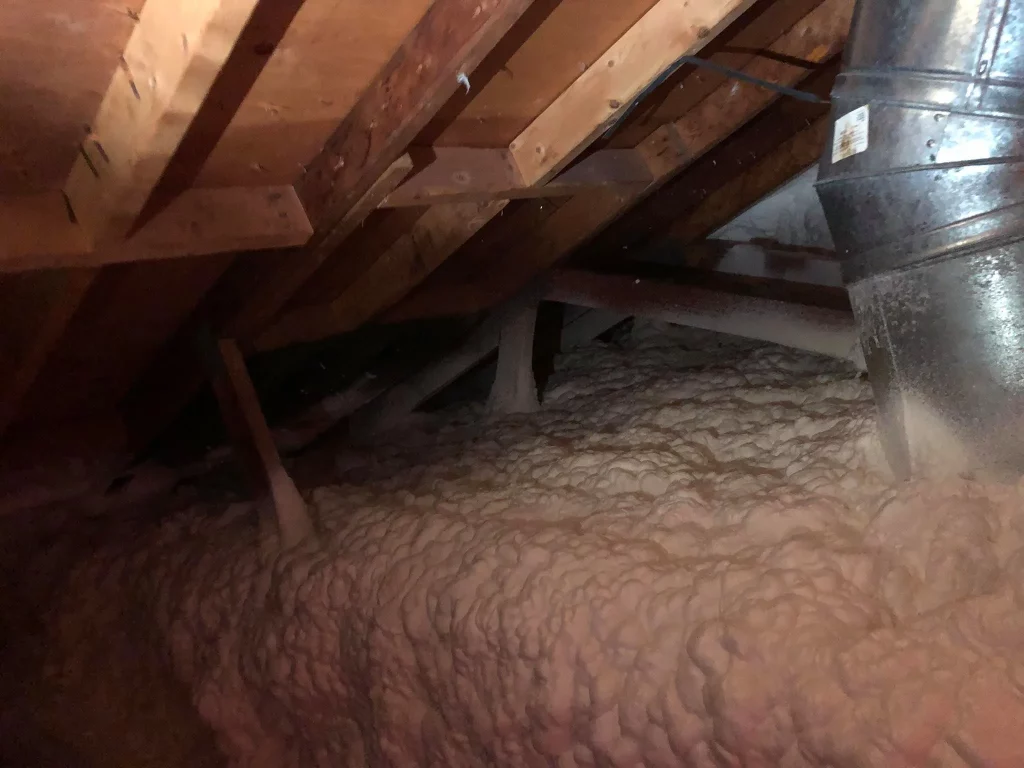
Yes, spray foam insulation is one of the most effective methods for preventing ice dams on roofs in cold climates. It works by directly addressing the root cause of ice dams: heat escaping from the living space into the attic. This heat warms the underside of the roof deck, melting snow from the bottom up. The meltwater then runs down the roof until it reaches the cold eaves, where it refreezes and forms a dam. By creating a complete air and thermal barrier on the underside of the roof deck, spray foam keeps the roof surface uniformly cold, preventing the snow from melting in the first place.
This article explains the mechanics behind ice dam formation and details how spray foam insulation offers a permanent solution. With extensive experience handling insulation projects in challenging weather conditions, Lamothe Spray Foam Insulation provides this guide to help homeowners understand their options for protecting their property.
Ice dams are not just a sign of a heavy winter; they are a clear indication of a problem with a home’s thermal envelope. The process happens in a specific sequence:
As experts at the Building Science Corporation explain, this combination of a warm roof surface and a freezing roof edge is the fundamental cause. According to the Insurance Information Institute, water damage from issues like ice dams can be incredibly costly, leading to damaged insulation, rotting wood, and mold growth.
Spray foam insulation creates an impermeable barrier that stops both air leakage (convection) and heat transfer (conduction). Unlike traditional insulation like fiberglass or cellulose, spray foam is applied as a liquid that expands to fill every crack and gap, creating a monolithic seal.
When applied directly to the underside of the roof deck, it creates what is known as an unvented or conditioned attic. This method changes the thermal boundary of the house from the attic floor to the roofline itself.
Here’s how that stops ice dams:
Bonus Tip: While focusing on the roof deck is key, it’s also important to ensure gable end walls and any other potential sources of heat loss within the attic are properly insulated and sealed.
Not all insulation performs equally when it comes to preventing ice dams. The primary difference lies in the ability to stop air movement. While traditional insulation can slow heat transfer, it does not stop air leakage, which is a major contributor to snowmelt on the roof.
| Feature | Closed-Cell Spray Foam | Open-Cell Spray Foam | Fiberglass Batts | Blown-In Cellulose |
|---|---|---|---|---|
| Typical R-Value/Inch | 6.0 – 7.0 | 3.5 – 3.8 | 3.1 – 3.4 | 3.2 – 3.8 |
| Air Sealing Ability | Excellent (Air Impermeable) | Excellent (Air Barrier) | Poor (Allows Airflow) | Fair (Reduces Airflow) |
| Moisture Resistance | Excellent (Vapor Barrier) | Good (Vapor Permeable) | Poor (Absorbs Moisture) | Poor (Absorbs Moisture) |
| Application | Underside of roof deck | Underside of roof deck | Between attic floor joists | Blown over attic floor |
R-values are based on data from the U.S. Department of Energy.
This comparison shows that while fiberglass and cellulose are effective insulators for an attic floor, they don’t create the necessary air seal at the roofline to prevent ice dams. Spray foam is uniquely suited for this application.
Applying spray foam to the roof deck is a significant upgrade, and several factors should be evaluated beforehand.

Spray foam is a preventative measure, not an immediate fix for existing ice dams. Any current ice dams must be safely removed by a professional before they cause more damage. The insulation will then prevent them from forming in subsequent winters.
When installed correctly, spray foam is a durable material that does not sag, settle, or break down over time. It should last for the entire life of the building.
Adding more insulation to the attic floor can help, but it often isn’t a complete solution. If air leaks are not sealed, warm air will still bypass the insulation and reach the roof deck. This is why air sealing is so critical.
Like many building materials, spray foam insulation is combustible. However, building codes require it to be covered by a 15-minute thermal barrier, such as half-inch drywall or a special intumescent coating, to meet fire safety standards.
Spray foam insulation stands out as a reliable, long-term solution for preventing destructive ice dams. By creating a seamless air and thermal barrier directly at the roofline, it stops the heat loss that initiates the entire damaging cycle. While the initial investment is higher than for traditional insulation, it prevents the recurring costs and headaches associated with ice dam removal and water damage repairs. Homeowners should evaluate their specific situation, considering their roof’s condition and long-term goals for energy efficiency and home protection.
If you are dealing with recurring ice dams, a professional evaluation can determine the best course of action for your home. To understand if spray foam insulation is the right solution, contact Lamothe Spray Foam Insulation for a detailed assessment. You can reach the team by calling (508) 847-0119 or sending an email to [email protected] to schedule a consultation and discuss your specific needs.